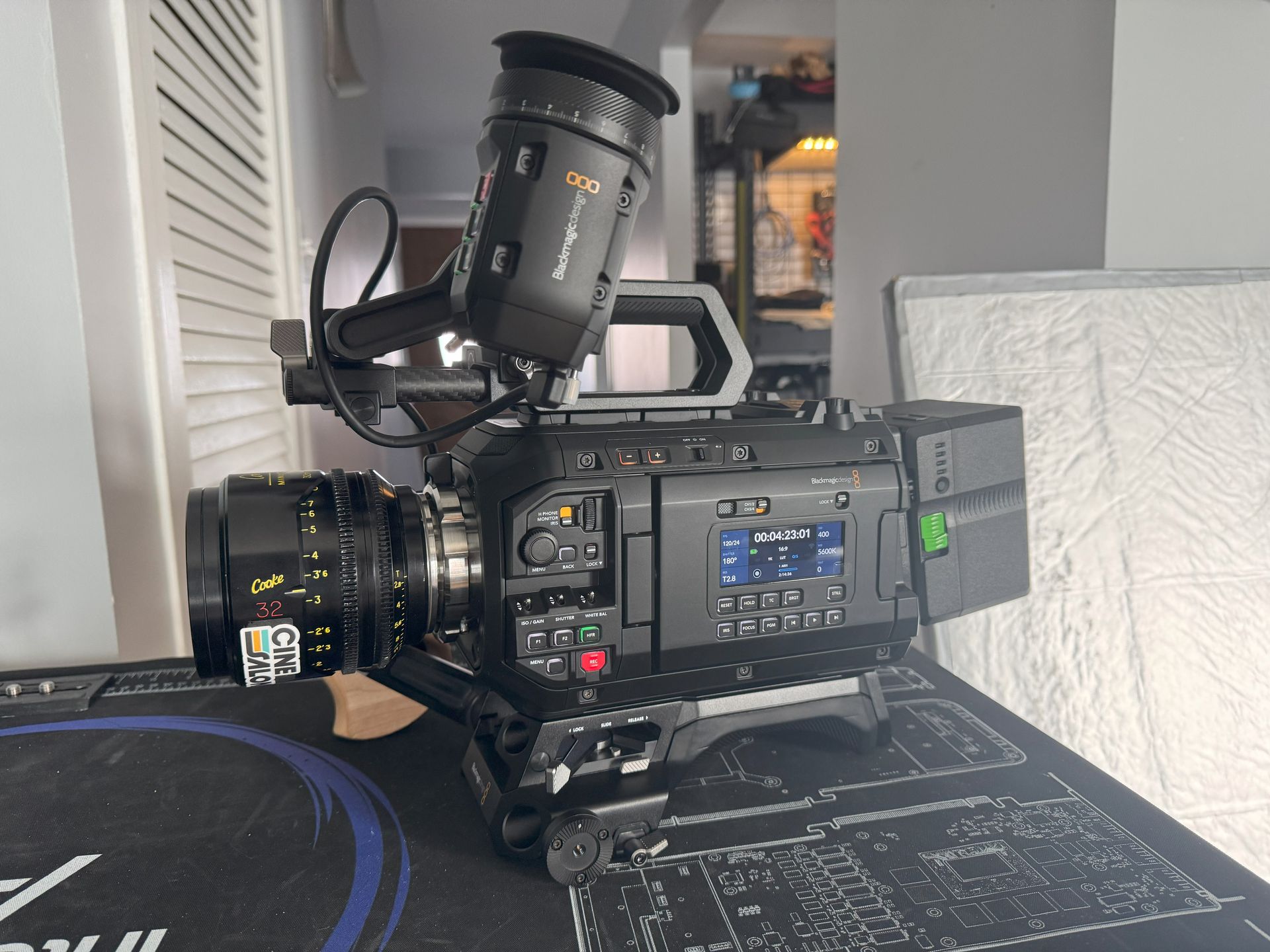SEO. These three letters are everywhere. SEO stands for search engine optimization. But what does it mean? It's improving your site - or in this case, your video content - to increase its visibility. When users search for specific keywords on Google or Bing, SEO ensures your content pops up. The goal is to attract more people to your site—people who could turn into customers, followers, or fans.
Importance of Understanding Search Engine Algorithms for Video Ranking
But how do search engines decide which videos to show first? They use something called an algorithm. This might not sound very easy. A computer follows a series of steps to solve a problem or make a decision. The "problem" for search engines is deciding which videos are most relevant to a user's search. The solution? They "rank" the videos. Videos that are more relevant to the search appear higher in the results.
Why does this matter to you? It's simple. Videos that appear on the first page of search results get more views. That could translate to more revenue or a larger audience. And that's why understanding how these algorithms work is crucial.
Knowing how to play the algorithm game is not just about understanding it. It's also about taking action and implementing the right keywords, creating engaging content, ensuring high video quality, and more. These factors can improve your video's rank.
This guide will take you through the journey of understanding these algorithms. We will explore how Bing and Google prioritize videos in their search results. We'll compare the two, looking at their similarities and differences. We will also give you practical strategies to improve your video SEO on both platforms.
SEO is not a one-time task. It's an ongoing effort. Search engines update their algorithms regularly. And we need to keep up. By the end of this guide, you will better understand how these updates might impact your videos. You'll know how to adapt and stay ahead of the competition.
Understanding Search Algorithms
A. Definition and Purpose of Search Algorithms
Let's get straight to it. What is a search algorithm? It's a set of rules. A computer uses these rules to solve problems. In our case, the problem is finding the most relevant videos for a search query.
The purpose of search algorithms is clear. They want to provide the best results for users. When you type something into a search bar, you want practical and relevant results. That's the goal of these algorithms.
B. Brief History of Search Algorithms in
Google and Bing didn't always have such complex algorithms. Let's take a brief trip down memory lane. This will help us understand how these algorithms have evolved.
Google's journey began in 1997. Back then, its algorithm was based on keyword matching. If your video's title matched a search query, it ranked higher. But this system was easy to exploit. People started stuffing their titles with irrelevant keywords. This led to poor search results. Google realized this and began making changes.
Bing's journey began a bit later, in 2009. It started as Microsoft's answer to Google. Like Google, Bing initially relied heavily on keyword matching. But it also looked at user engagement metrics. Things like how long a user stayed on a page. Or whether they clicked on other links on the page. These metrics helped Bing deliver more relevant results.
Both Google and Bing have come a long way since then. They've updated their algorithms to consider a host of factors. Keywords are still important. But now, they also look at video quality, user engagement, and more. We'll delve deeper into these factors in the following sections.
The history of search algorithms teaches us one important lesson. They are constantly evolving. Bing and Google keep refining their algorithms to deliver better results. As video creators, we must understand these changes. Only then can we optimize our videos for better ranking.
The following sections will dissect how Bing and Google rank videos today. We'll go through each ranking factor. And we'll give you some tips to improve your video SEO.
Google's Video Search Algorithm
A. How Google Ranks Videos
Ever wondered how Google decides which videos to show at the top? Here's the scoop. Google uses a complex algorithm. It takes into account a variety of factors. Let's explore them.
B. Factors that Influence Google's Video SEO
1. Keywords: Keywords remain essential in Google's ranking process. They help the algorithm understand what your video is about. However, keyword stuffing no longer works. Google's algorithm is more intelligent now. It values the relevance and natural placement of keywords.
2. Video Length: Short videos or long videos? There's no definitive answer. It's all about relevance and quality. However, Google tends to favor longer, informative videos. But remember, engagement matters too. So, if your video is long, make sure it's also engaging.
3. Viewer Engagement: This includes likes, shares, comments, and watch time. A high engagement signals to Google that your content is valuable. The algorithm then boosts the video's ranking.
4. Video Quality: High-definition videos are a preference. Google equates high video quality with a better user experience. So, always aim for the best quality you can provide.
5. Metadata: This includes your video's title, description, and tags. Google uses this data to understand your video's content. Make sure your metadata accurately represents your video.
C. Case Studies of Successful Video SEO on Google
Let's look at some examples. These are videos that nailed Google's SEO. We'll analyze what they did right. This will give us practical insights.
Case Study 1: A tutorial video that ranks high. It has a clear, keyword-rich title. The video length is considerable, with high viewer engagement. The quality is crisp. The metadata is accurate and informative.
Case Study 2: An entertainment video with massive success. The keyword placement is natural and relevant. It's shorter but highly engaging. The video quality is top-notch. The metadata is catchy yet representative of the content.
From these studies, we can see how Google's algorithm works. An understanding of these factors can boost our video ranking. So, remember these points when creating your next video for Google.
Bing's Video Search Algorithm
A. How Bing Ranks Videos
Now, let's explore Bing's territory. Bing, like Google, uses an intricate algorithm. It also considers various factors to rank videos. Let's dive into these elements.
B. Factors that Influence Bing's Video SEO
1. Keywords: Just like Google, Bing considers keywords essential. But it also dislikes keyword stuffing. The keywords you choose should accurately represent your video content. They should be naturally placed within your title, description, and tags.
2. Video Length: Unlike Google, Bing slightly prefers shorter videos. This doesn't mean long videos won't rank. But shorter videos have a better chance if they are high-quality and engaging.
3. Viewer Engagement: Bing pays attention to how users interact with your video. Are they watching it until the end? Are they leaving likes or comments? High engagement can help improve your ranking on Bing.
4. Video Quality: Bing values high-definition videos. But it also considers the loading speed. Videos that provide excellent quality without buffering issues are more likely to rank higher.
5. Metadata: Bing uses metadata to understand your video. A well-written title, description, and appropriate tags can help your video rank better.
C. Case Studies of Successful Video SEO on Bing
Now, let's take a look at some real-world examples of Bing.
Case Study 1: A cooking tutorial that consistently ranks high on Bing. It has relevant keywords woven naturally into the title and description. The video is short, easy to follow, and highly engaging. It provides excellent quality, both visually and in content.
Case Study 2: An exercise video that got much attention on Bing. It's compact, filled with helpful content, and high-definition. The title, description, and tags are well-optimized with relevant keywords.
These examples help us understand how Bing's algorithm works. We can improve their performance on Bing by applying these insights to our videos.
Remember, Bing's and Google's algorithms have similarities. But they are not the same. They have different preferences when it comes to video length, for instance. They also interpret viewer engagement slightly differently. So, when creating a video, you should consider these differences. Tailor your video to the platform you're targeting.
Differences between Google and Bing's Video Search Algorithms
A. Key Disparities in Their Ranking Factors
Google and Bing, both giants in the search engine world, have different takes on video ranking. They both consider keywords, video quality, engagement, and metadata. But they interpret and weigh these factors differently. Let's break it down.
1. Keywords: Both search engines value relevant, naturally placed keywords. However, Bing tends to give slightly more weight to exact keyword matches.
2. Video Length: Google usually favors longer, comprehensive videos, assuming they're engaging. On the other hand, Bing leans towards shorter, high-quality videos.
3. Viewer Engagement: Engagement matters to both, but they look at different aspects. Google focuses heavily on watch time, while Bing considers complete engagement, like the click-through rate.
4. Video Quality: High-definition videos are preferred on both platforms. But Bing also considers loading speed, favoring high-quality videos without buffering issues.
B. How These Differences Can Influence Video SEO Strategies
Understanding these differences is the key to optimizing your video for each platform. Let's see how these disparities can impact your video SEO strategies.
If your primary platform is Google, focus on creating longer, comprehensive, and engaging videos. Optimize your keywords, but avoid stuffing. Ensure your video quality is top-notch.
However, consider creating shorter, high-quality videos if you're targeting Bing. Loading speed matters, so ensure your videos are well-optimized. Accurate keyword usage in the metadata could also give you an edge.
Remember, each platform has its unique strengths. Leveraging these can help you extend your video's reach. But don't forget about your audience. Ultimately, they are the ones watching your content. Always prioritize delivering valuable, engaging content to your viewers.
The following section discusses practical strategies for improving video SEO on both platforms. Regardless of the forum, we'll provide tips that could help you rank better.
Effective Strategies for Video SEO on Both Platforms
A. Best Practices for Keyword Optimization
Keywords are vital in SEO. Here's how you can optimize them:
1. Research: Use tools like Google Keyword Planner or Bing Keyword Research Tool. They can help you find relevant keywords for your content.
2. Placement: Place your keywords in the title, description, and tags. But remember, don't stuff. The post should feel natural and relevant.
3. Long-tail Keywords: Consider using long-tail keywords. They're more specific and can help you target a niche audience.
B. Tips on Improving Viewer Engagement
Viewer engagement can boost your video ranking. Here are some tips:
1. Quality Content: Providing valuable content is the best way to engage viewers. Make sure your video is informative, entertaining, or both.
2. Call to Action: Encourage viewers to like, share, comment, and subscribe. This can increase engagement rates.
3. Reply to Comments: Engage with your audience by replying to their comments. This can foster a sense of community.
C. Importance of Video Quality and How to Optimize It
High-quality videos can enhance user experience. Here's how to optimize it:
1. High Definition: Always aim to upload your videos in HD.
2. Sound Quality: Clear and audible sound is critical. Invest in a good microphone if necessary.
3. Editing: Use editing to enhance your video. It can make your video look more professional.
D. How to Create Effective Metadata for Video SEO
Metadata can help search engines understand your video. Here's how to create adequate metadata:
1. Title: Make it catchy yet representative of your content. Include your primary keyword.
2. Description: Write a detailed description. Include your keywords but avoid stuffing.
3. Tags: Use relevant tags. They can help your video reach the right audience.
Using these strategies, you can optimize your videos for both Google and Bing. In the next section, we'll talk about the future of video SEO.
The Future of Video SEO: Trends and Preparations
A. Emerging Trends in Video SEO
As technology advances, so does SEO. Here are some emerging trends:
1. Voice Search: As more people use digital assistants, voice search is rising. This could impact how we choose and use keywords.
2. Artificial Intelligence: AI is changing how search engines rank content. They're becoming more efficient at understanding and evaluating content.
3. User Experience: Search engines are focusing more on user experience. Metrics like loading speed, mobile-friendliness, and site security can influence rankings.
B. Preparing for the Future of Video SEO
To stay ahead, you need to prepare for these changes. Here's how:
1. Adapt to Voice Search: Consider how people speak their queries. They might use more natural, conversational language. Factor this into your keyword strategy.
2. Keep Up with AI Changes: AI developments can change SEO rules. Stay updated with the latest news from Bing and Google.
3. Prioritize User Experience: Make your videos easy to access and watch. Fast loading times, clear audio, and high-definition visuals are crucial.
In conclusion, mastering video SEO is an ongoing journey. Algorithms will change. New trends will emerge. But with a strong understanding of the basics and an eye on the future, you can keep your videos at the top of search results. Remember, the goal is to provide valuable, engaging content. Do this, and both the algorithms and your viewers will reward you.
Key Takeaways and Actionable Steps
Now, let's recap what we've learned and discuss some actionable steps you can take to improve your video SEO.
A. Key Takeaways
1. Understanding Algorithms: Google and Bing have unique algorithms that rank videos based on several factors. Knowing how these algorithms work is crucial for video SEO.
2. Ranking Factors: Both algorithms consider keywords, video quality, viewer engagement, and metadata. However, they interpret these factors differently.
3. Adapting to Each Platform: You should tailor your videos according to each algorithm's preferences to rank well on both platforms.
4. Future of Video SEO: Emerging trends like voice search and AI are changing the landscape of video SEO. Preparing for these changes can keep you ahead in the gam
B. Actionable Steps
1. Keyword Research: Use keyword research tools to find relevant video keywords. Incorporate these keywords naturally in your title, description, and tags.
2. Improve Viewer Engagement: Focus on creating high-quality content that engages viewers. Encourage interaction through likes, shares, comments, and subscriptions.
3. Enhance Video Quality: Invest in good equipment to improve video and audio quality. Also, optimize your videos for quick loading.
4. Stay Updated: Watch the latest news and updates from Google and Bing. Adjust your video SEO strategy accordingly.
5. Prepare for the Future: Factor in emerging trends like voice search and AI in your video SEO strategy. Prioritize user experience to stay relevant in the future.
By implementing these actionable steps, you can improve your video SEO on both Google and Bing. Remember, effective SEO is not just about ranking high on search results. It's also about reaching the right audience and providing valuable content.
Final Thoughts: Navigating the Video SEO Landscape
Congratulations! You're now equipped with the knowledge to optimize your videos for both Google and Bing. But remember, SEO is a journey. It's a field that evolves constantly. And it's one where persistent application of best practices leads to success.
While sharing similarities, the algorithms of both Google and Bing interpret and weigh ranking factors differently. Tailoring your videos to cater to the unique preferences of each platform can help you optimize your reach and engagement.
Emerging trends like voice search and AI are revolutionizing the SEO landscape. By staying updated with these trends and adapting your strategies, you can ensure your videos remain relevant and accessible to your audience.
But at the end of the day, the heart of effective video SEO is creating valuable, high-quality content. When you prioritize your audience, creating content that informs, engages, or entertains, you're already on the path to success.
The future of video SEO is promising and exciting. As you embark on this journey, keep these insights in mind, apply the actionable steps, and you'll be well on your way to mastering the art of video SEO on Google and Bing.
Frequently Asked Question
How important is video length for ranking in search results?
A: Video length can be a ranking factor, but its importance differs between Google and Bing. Google often favors longer, comprehensive videos, provided they are engaging, while Bing favors shorter, high-quality videos. Regardless, the content should constantly be engaging and relevant.
How do I choose the right keywords for my video SEO?
A: Keyword research tools like Google Keyword Planner or Bing Keyword Research Tool can help. Choose keywords relevant to your content, and use them naturally in your title, description, and tags. Consider long-tail keywords, which can help you target a specific niche.
What role does user engagement play in video ranking?
A: User engagement significantly affects video ranking on both platforms. Both search engines look at factors like how much video is watched, the number of likes, shares, comments, and more. Encouraging viewer interaction can therefore boost your video's ranking.
How can I prepare for the future of video SEO?
A: Stay updated with emerging trends like voice search, AI, and changes in user experience preferences. Adjust your SEO strategy to incorporate these changes, prioritizing areas like voice-friendly keywords and improved user experience.
Are there specific video SEO strategies for Google and Bing?
A: While both platforms share similar ranking factors like keywords, video quality, viewer engagement, and metadata, they interpret these factors differently. Therefore, tailoring your video SEO strategy to cater to each platform's preferences can improve your video's performance.
How can I improve the quality of my videos?
A: Invest in good equipment to improve video and audio quality. Use editing tools to enhance the overall visual presentation. Also, ensure your videos load quickly, as both Google and Bing consider this factor.

Get total clarity on your video marketing and paid media with our FREE comprehensive data audit.







